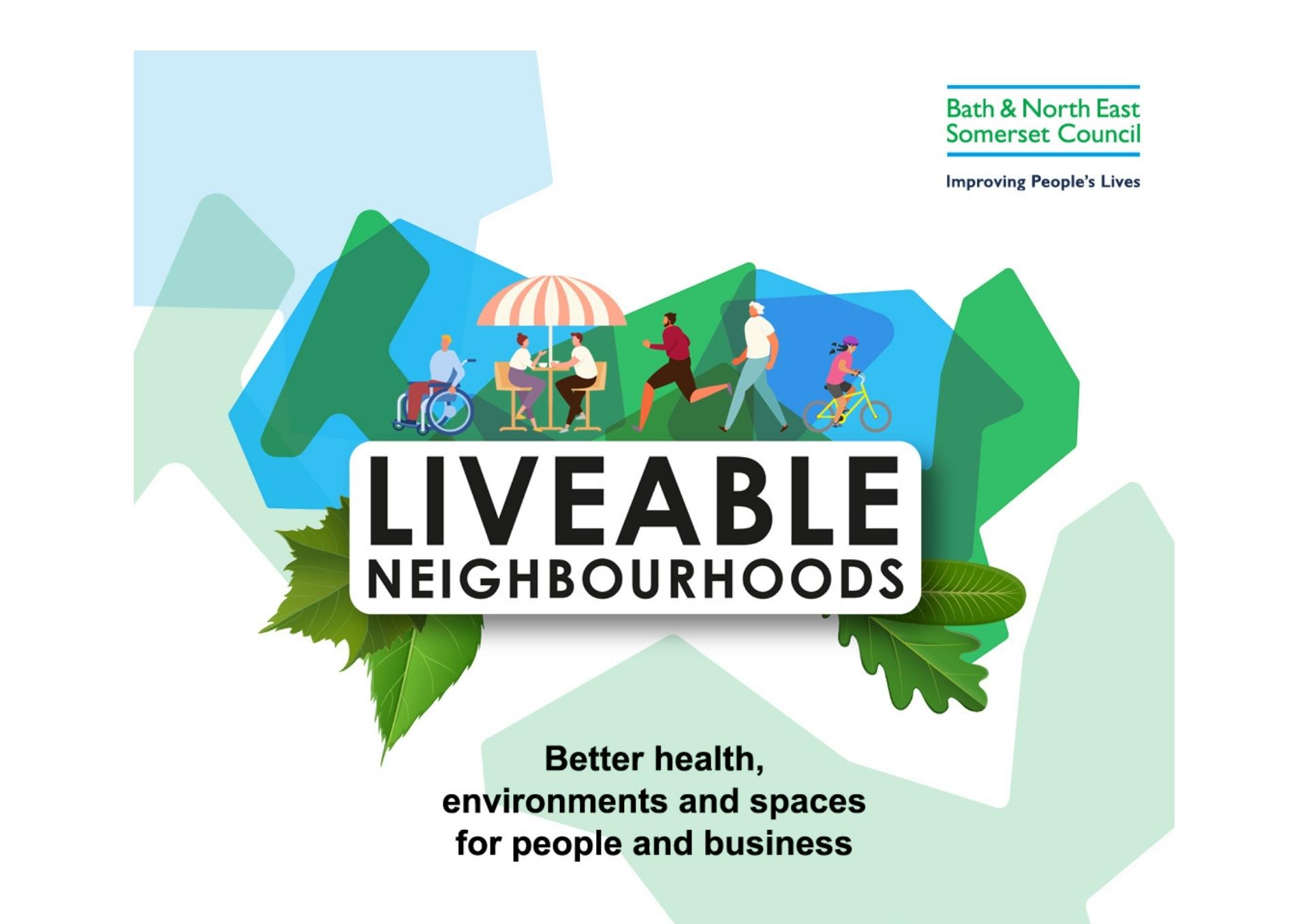Date published: 2024-01-12 | Category: Parking and Travel, Roads, travel and transport, Giving people a bigger say, Bath, Delivering for local residents

Results of three Liveable Neighbourhood experimental trials in Bath and North East Somerset have been published today as part of the next step in decision-making on whether to make them permanent.
Through-traffic restriction trials in Southlands (Weston), Queen Charlton Lane (Whitchurch) and Church Street (Widcombe) were installed under experimental traffic regulation orders (ETROs) in November 2022 under the Liveable Neighbourhoods programme.
During the trials, the council gathered feedback from residents and monitored the impacts of traffic on surrounding roads and air quality so that the decision on whether to keep or remove the trials can be based on the evidence collected, while also considering council policy.
In each location, the purpose of the through-traffic restriction was to prevent motorists from using inappropriate residential roads as short cuts, while maintaining vehicle access to homes, and to provide a safe and pleasant route for walking and cycling. The need to tackle excess through traffic was identified by these communities during earlier consultation and co-design for the LN programme.
The reports, which are on the council’s website as part of a Single Member Decision cover the impact of the trials on traffic and air quality, and responses to the six-month public consultations and surveys conducted with residents living on and around the trial streets.
Before starting the trials, reports show nearly half of all traffic in Southlands and Church Street was through traffic, defined as vehicles using the road without stopping. This data was not explicitly recorded for Queen Charlton Lane because the lane was primarily used as a through-route.
After the trial in all cases, the number of vehicles entering the streets for access from either end of the restrictions also dropped significantly, in addition to through traffic being cut to zero.
The monitoring reports note that no significant traffic impacts were recorded on the primary alternative routes as a direct result of the trials and, most commonly, there were air quality improvements within and outside the trial area. In all cases, the NO2 readings are well below the government legal limit and also within the council’s own stricter targets.
In Queen Charlton Lane the restriction took up to 400 vehicles a day off the lane leading to a much more pleasant environment. One resident commented:
“This road was being used as a ‘rat run’ prior to the closure. Since the trial I have been able to walk along a quiet country lane without fear of being knocked down.”
And the public consultation and end-point survey reports reveal strong support from residents for the trial (more than 70%). The reports also note a significant uptake in walking and cycling along the lane.
In Church Street, while the uptake of walking and cycling was marginal, 63% of all local respondents said they supported the through-traffic restriction trial with a resident stating: “As a cyclist the change to Church Street has been incredible. My mum didn’t want me to cycle on the road before because it was so dangerous. Now I cycle to and from school every day.”
The traffic monitoring report for Southlands notes a significant reduction in traffic and an uplift in cycling. It also notes that 41% of residents responding to the end-point survey – who also live in Southlands – agreed that the scheme has had a positive impact on themselves and their area with a resident noting: “Southlands feels like a safer road to walk and drive and cycle on since the scheme. It is quieter and easier to cross the road without worrying about traffic.”
Responses to the end-point survey, suggest that more than half of residents, 57 per cent, continued to oppose the trial. However, it was noted, that several of the reasons for opposing the trial were not borne out in practice. This includes a perception by around half of respondents that the restriction would cause congestion on surrounding roads and several stating that it would lead to deteriorating air quality on those roads. Evidence from the monitoring reports show that this is not the outcome.
Councillor Manda Rigby, Cabinet Member for Transport, said, “The trials are the outcome of significant consultation with communities as part of our Liveable Neighbourhoods programme and I look forward to considering the outcomes presented in these reports before a decision is made on whether to make these trials permanent under formal Traffic Regulation Orders.
“Early in the new year, we will also consider proposals for five more traffic restrictions under the LN programme in the Lower Lansdown and Circus area, in the Lyme Road and Charmouth Road area, and in the New Sydney Place and Sydney Road area, all designed – in line with council policy - to prevent residential areas being used as short cuts and increase choice and safety for those that choose to walk, scoot or cycle. The long list of proposed interventions suggested by local communities across all the Liveable Neighbourhood areas is being reviewed by local councillors and considered as part of a full business case to be submitted to the West of England Combined Authority in early summer 2024.”
More information on the Council’s Liveable Neighbourhood Programme can be found at www.bathnes.gov.uk/liveableneighbourhoods. To find the reports on the trial schemes follow these links:
- Queen Charlton Single Member Decision Report
- Southlands Single Member Decision Report
- Church Street Single Member Decision Report
ENDS
